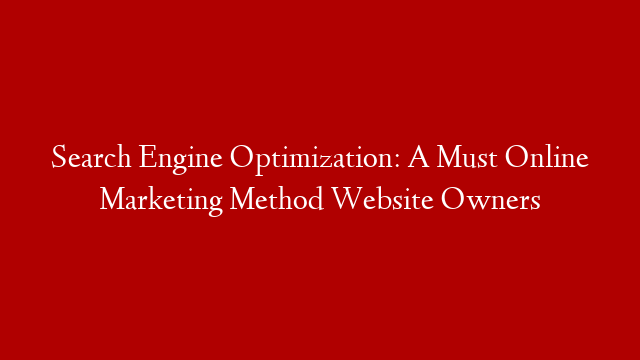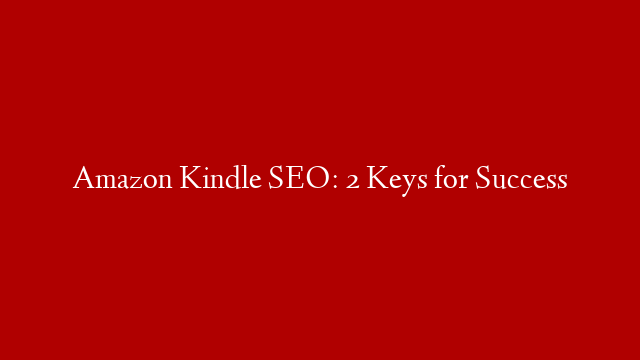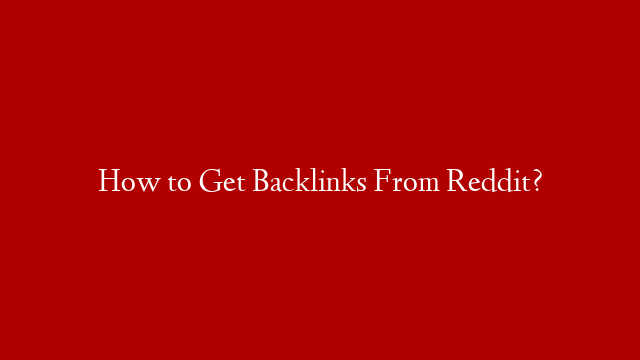Some visitors will visit your site, because you wisely listed it on your business card, or added it to your e-mail signature, but majority of your visitors will come from search engines.
If you want people to find your personal home page when they search on your name, and for whatever reason your site is not showing up in the results of the most popular search engines, then at worst you will be a little less famous and a little more disappointed.
But, it is much more serious if you are responsible for maximizing the number of prospective customers who visit your company’s website, so that they can purchase items online from your company’s catalog. If for some reason the search engines are displaying your competitors’ sites ahead of your company’s, then it could mean the difference between your company making or losing money, and your being promoted to a corner office or demoted to a street corner.
The tremendous popularity of search engines among Internet users, is the primary reason why commercial firms – especially those whose revenue is primarily or exclusively derived from online sales – are willing to invest significant resources in fine tuning their websites to get the best rankings within search engine listings. This practice, and now profession, of “search engine optimization” (SEO), is a critical component of online marketing.
How Search Engine Works
There are hundreds of factors that are involved when search engines rank websites in an organic search. Amazingly enough, they can analyze billions of pieces of data in as fast as 0.5 seconds! The actions you take to optimize your site will have a direct effect on your SEO ranking. Components such as H1 tags, the words used in your website meta description, content and keyword density, permalinks, and backlinks are some of many things that you can leverage to boost your ranking.
H1 Tags: These are the larger headers you use to title your content. For example, the H1 for this article would be the title, ‘The Basics of Search Engine Optimization’. This article page may surface on the Google search results when someone searches for keywords that are present in the H1 tag like ‘SEO’ and Basics of SEO’. Make sure your H1 tags are relevant to the keywords you want to be showing up for.
Keyword Density: This is the amount of times that the keyword your audience is searching for appear on your website. Make sure to mention your keywords, not only in your H1 tags, but also in the body of your content. While you want to include your keywords often, don’t over saturate your content. Remember, Google will also consider the use of synonymous keywords.
First, develop a list of all the phrases that you can think of that people might use to find your site – succinct phrases that best describe your business. Then hone that list down to the two dozen most likely phrases. If you have difficulty creating a list of keywords, then take a look at Wordtracker, which is designed to help you optimize your keyword list. At this time, they offer a free trial.
These keywords can and should be located in the text of each page, which is visible to someone viewing the page in a Web browser. In addition, the keywords can be placed in the headings, subheadings, images’ captions, images’ alternative text attributes (<img alt=””>), page titles, and anywhere else that they seem appropriate.
Meta Description: This is the description you provide search engines in your <meta> HTML tags. The meta description you use for your website should also include the keywords you want your target audience to search for.
You should bear this in mind when you are wondering why some or all of the search engines appear to be ignoring your new website. It’s simply one needle in a humongous haystack. But don’t give up hope
Permalinks: This refers to permanent URL links that are specific to your website. It is advantageous to include your keywords in these permalinks in order to be considered for higher ranking on Google. For example, if you have a gardening website and want your consumers to find the keywords “lawn products,” it would be optimal for you to have a page with a permalink such as: <a target=”_blank” rel=”nofollow” href=”http://www.gardening.com/lawn-products”>http://www.gardening.com/lawn-products</a>.
Backlinks: This is when other websites link back to yours by providing their viewership with your website URL. For example, if Forbes mentions your business on their website and includes a link for their readers that leads back to your website, this would be considered a backlink. The more of these you have, the better your opportunities are to be higher ranked in your keywords. However, the source of your backlinks also play a factor in ranking. Google values quality and the bigger the source your backlink come from (ie. Forbes, NY Times, .gov addresses etc.) the better chances you have for being ranked higher in your Search Engine Optimization.
Search Engine Optimization on desktop vs mobile: Is your website mobile friendly?
Search engines are constantly evolving and changing their algorithm in order to keep up with the constantly developing new technology. With the rise of the mobile device, more and more individuals are searching on the go. Google has noticed the increased mobile traffic of its users and has rolled out a new addition to their search ranking metrics. If your website is not mobile friendly (responsive, optimized to be viewed on various mobile screen sizes), Google will rank your website lower on the search rankings. However, this will only affect your mobile search rankings. Search rankings from a non-mobile device such as a desktop computer or laptop will not be affected. This is something to keep in mind if you know your specific target market is more likely to search for your keywords on a mobile device (i.e. your product is a mobile app).
SSL Certificate. Recently Google put into consideration websites that have SSl certificates. Consider buying an SSL certificate Today. Uniquenameregistration.com offers various SSL Certificate at good rate.
Site Design and Other Factors
While embedding well-targeted keywords within your site is acknowledged to be the most SEO valuable technique, there are other worthwhile elements: smart site design, reciprocal links, and attractive page content. To make your site as welcoming as possible to search engines spiders: organize the pages and links in a logical hierarchy, opt for CSS divs instead of nested tables, use text instead of images for the navigation links (or at least have flawless image alt values), and include a site map (which serves as an index of links to your pages) if the site has more than a dozen pages.
Appropriate reciprocal linking is when two or more sites have links to each other, as a natural result of the surrounding content of each site. This is quite different from – and far more effective than – the so-called “link farms”, which are merely content-free pages that contain nothing but links to the sites of paying clients. Search engine firms caught on to that trick a long time ago. Consequently, paying someone to include links to your site among thousands of others, would not only be a waste of your money, but can get your site quickly penalized in the search results, or even blacklisted entirely.
The best way to entice new visitors to your site, whether they are humans or spiders, is to offer free quality content. This will encourage human visitors to check back frequently to see new content, and also to post links to your site on their own sites and in their blogs. This invariably increases your site’s estimation by search engines. Having fresh content that matches your targeted keywords and phrases will also result in higher rankings by the search engines, because they always examine words within the context of the surrounding material.
Your SEO strategy should be a long term process
Getting placed on the first page of a Google search doesn’t happen overnight. Your SEO strategy needs to be a continuous process. As technology develops, search engines also adapt to these changes by altering their algorithms that define how you website gets ranked. Stay on top of your SEO strategy and make sure that it is up to date.
Your SEO strategy will go a long way for you and your business with the proper maintenance. Not only will you have your current customer base, but you can passively accrue traffic to your website by being present in the top 5 searches for your keywords. Customers will be able to find you and your business easily when looking up relevant information that pertains to your business. A good rule of thumb to keep on top of your SEO strategy is to research the tactics used by your competitors. Google your own keywords and see who places in the top 5 searches then analyze their websites to see how and why they are being placed in the top rankings
Search engine optimization is an increasingly important component of wise website promotion. While an article can only touch upon the major topics within SEO, you likely can see already how important these methods are for improving your site’s standings within search engine rankings, and thus in the eyes of Internet users for whom “Google” is now a verb.



